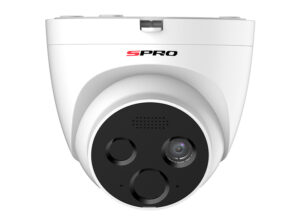 Discussing the development of flame detection cameras and their transformative potential in fire response measures
Discussing the development of flame detection cameras and their transformative potential in fire response measures
The fire safety industry is persistently advancing to keep pace with the incessant risk of fire incidents. Amid these ongoing challenges, an innovation stands out, promising a new frontier in fire safety – flame detection cameras. These devices could provide an unparalleled enhancement to traditional fire detection methods, introducing a higher level of security and responsiveness.
Traditional fire detection systems, such as smoke detectors and heat sensors, have always been the bedrock of fire safety. These systems are integral in maintaining safety, given their proven effectiveness over decades of use. However, they are not without limitations. These systems often struggle with immediate detection, particularly in larger areas, or when fires start outside a building, as fires can progress significantly before smoke or heat is registered. This delay poses a significant risk and underscores the importance of developing an additional layer to traditional systems, one that is more responsive, in those sorts of applications.
This is precisely where flame detection cameras exhibit their prowess. They have the incredible capability of detecting a fire in its nascent stages, even when smoke is virtually invisible to the human eye. In large commercial and industrial settings, where fires can often take hold quickly, these devices can visually identify flames before smoke reaches a detector. Consequently, potential fires could be identified within a strikingly short 3 to 5 seconds, which could prove to be a gamechanger in preventing catastrophic fire damage.
John Norris, Technical manager of Luxrite comments, “Flame detection cameras are an excellent addition to our toolkit in fire protection. However, we should always remember they are an enhancement, not a replacement. They should be used alongside traditional fire systems, not in place of them, to ensure a robust and comprehensive protection network.”
Furthermore, these devices leverage intricate algorithms to scrutinise pixel data, skillfully distinguishing between actual fires and false triggers. This algorithmic approach significantly reduces the rate of false alarms, thereby enhancing system reliability and response times. It’s a step forward that holds promise in improving not just fire detection but overall safety management.
While boasting adaptability, flame detection cameras also integrate with existing intruder and fire systems, thereby bolstering a location’s total safety measures. These cameras, in harmony with other systems, establish a robust safety network, ready to combat potential fire hazards. They add a critical layer of protection to a fire safety strategy when professionally installed and regularly maintained. Achieving optimal positioning, precise setup, and ideal operation are paramount to utilising their swift detection capabilities and low false alarm rates.
Consulting with fire safety experts is always a sound move, as their insights can tailor this technology to the unique needs of each setting. Norris emphasises, “This technology is only as effective as its application. It’s crucial to get the right positioning, setup, and integration for these cameras to truly make a difference.”
We stand at the advent of an era where the integration of security and safety may even see CCTV systems performing surveillance, access, and fire detection in one package. This possibility has its benefits, such as consolidated control and enhanced responsiveness. However, the risk lies in creating a single point of failure – if the integrated system fails, all its functionalities go down with it.
That being said, flame detection cameras mark a significant milestone in fire response measures. From industrial complexes to domestic dwellings, this groundbreaking technology carries profound potential. It offers a tangible and measurable upgrade to fire safety practices, increasing detection speed and reducing false alarm rates.

